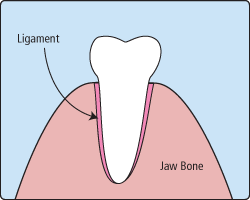
Tooth extraction is the removal of a tooth from its socket in the bone. It can seem a daunting and nerve-wracking procedure but it is a fairly standard dental procedure. In many cases, you can repair teeth that are broken or damaged by decay with a filling, crown, or other dental treatment but sometimes the damage is too severe to repair and an extraction will be recommended.
Some common reasons a tooth extraction may be necessary includes:
- Decay or infection has reached deep into the tooth
- Trauma or injury
- Extensive periodontal disease causing mobility of the tooth
- There isn’t enough room for all the teeth in your mouth
- Baby teeth on’t fall out in time for the permanent teeth to come in
- Orthodontic treatment may require tooth extraction to create room for the teeth as they move into place
- Third molars, also called wisdom teeth, are often extracted either before or after they come in
There are two types of extractions:
A simple extraction is the removal of a tooth that is visible in your mouth. It’s common for a general dentist to perform simple extractions.During a simple extraction, your dentist will numb the tooth and gum tissue and loosen the tooth with an instrument called an elevator before removing it with dental forceps.
A surgical extraction is a more complex procedure used for a tooth that may have broken off at the gum line or has not come into the mouth yet. Oral surgeons and general dentists can perform these surgeries. During a surgical extraction, the doctor will make a small incision (cut) into your gum to help aid in the removal of the underlying tooth.
Please refer to our post-op extraction care video for detailed aftercare instructions.

 Website Powered by Sesame 24-7™
Website Powered by Sesame 24-7™